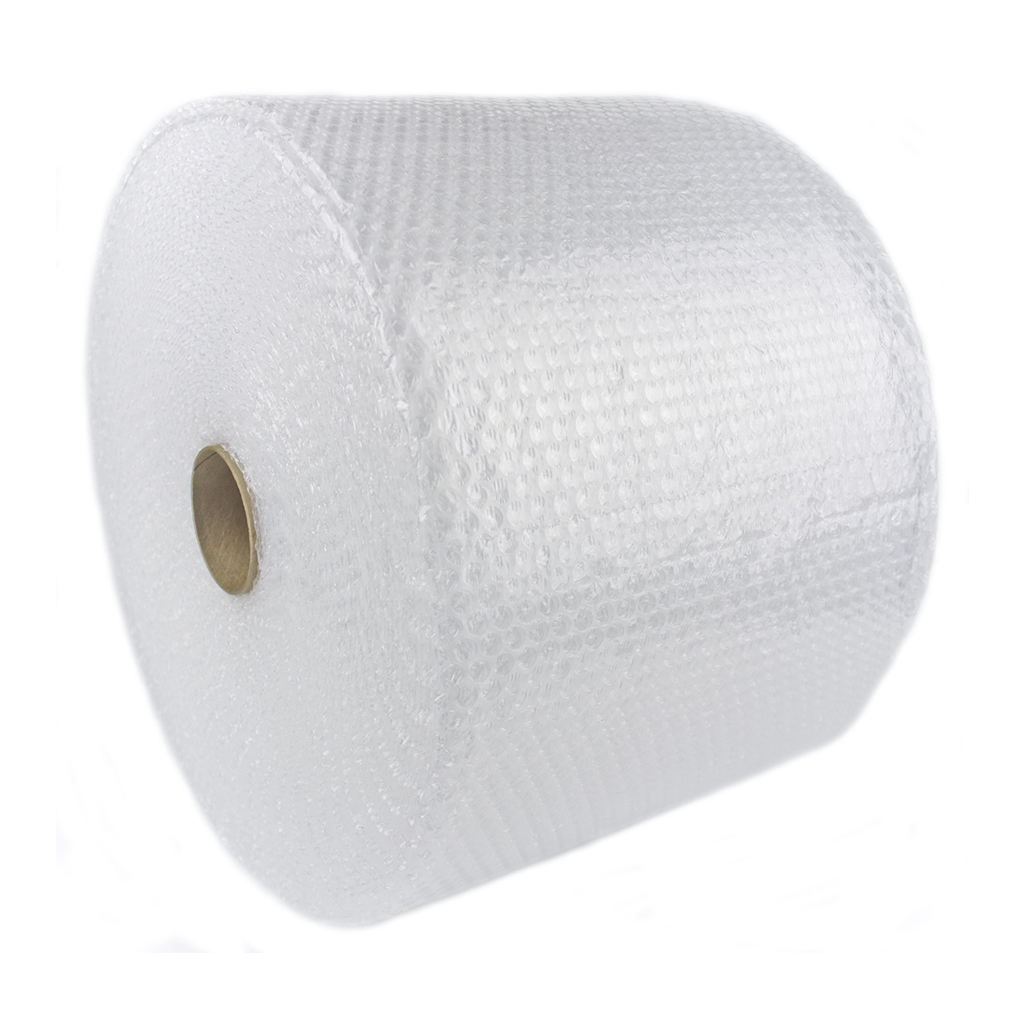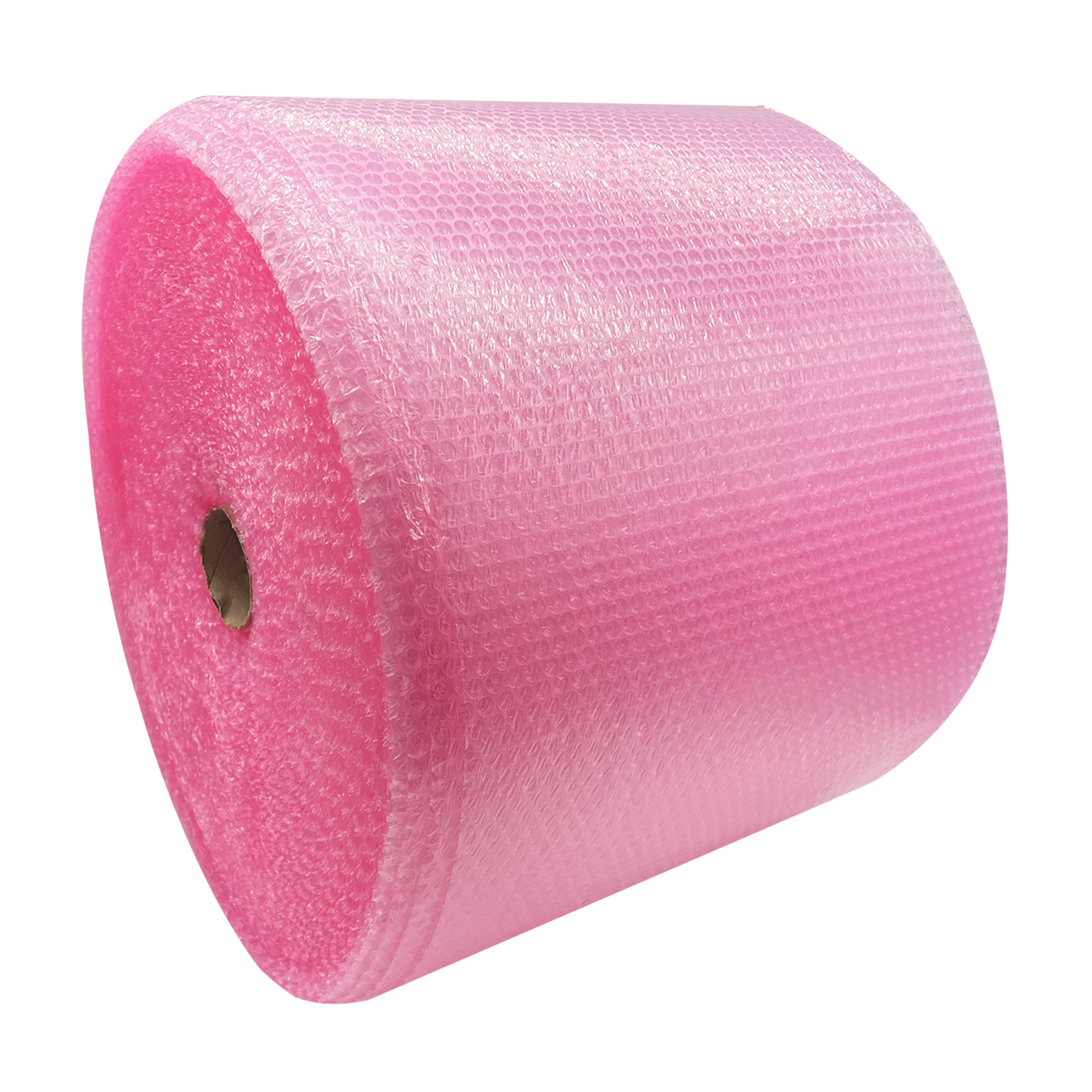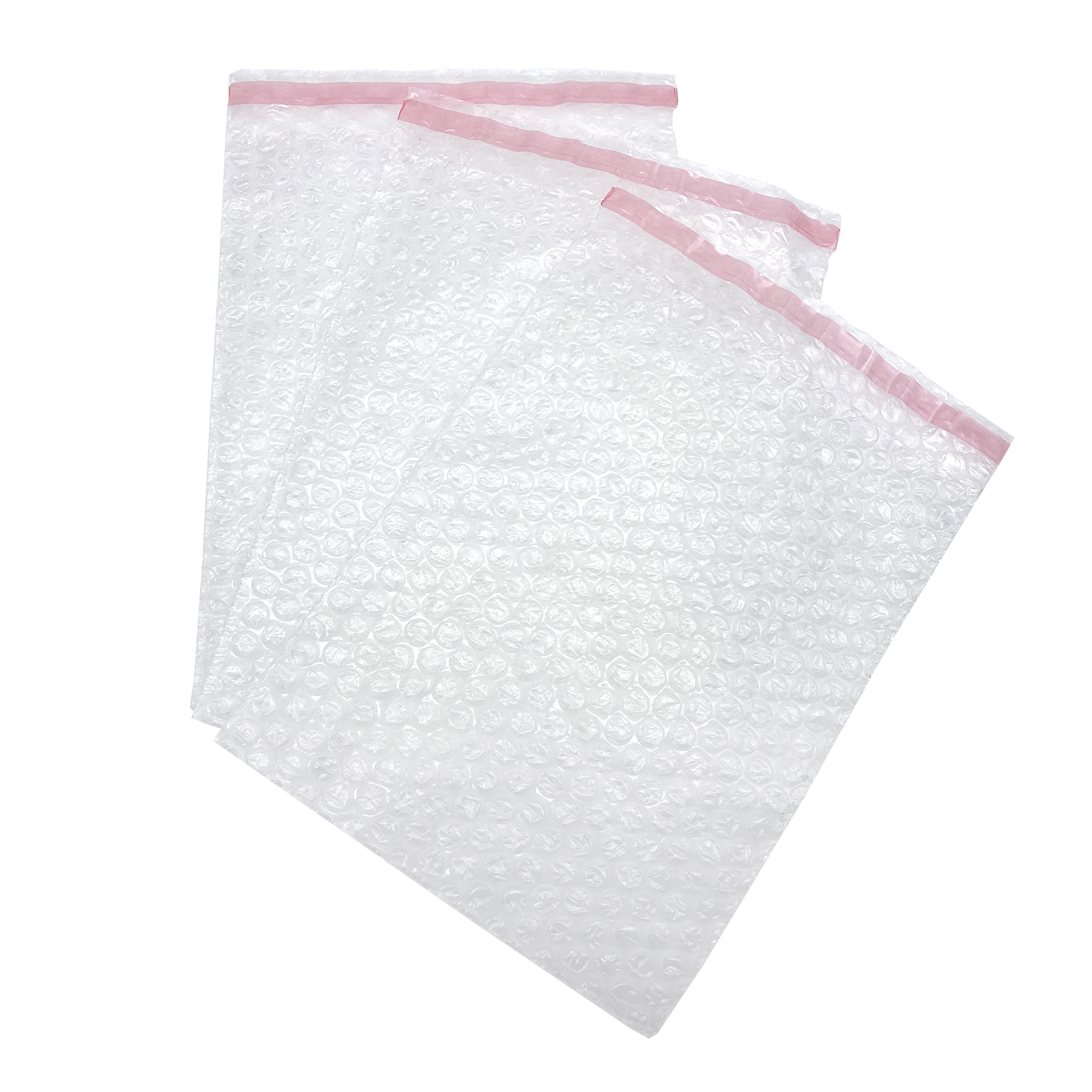How is Bubble Wrap made?
Bubble Wrap is manufactured from low-density polyethylene (LDPE).
The manufacturing process involves melting and extruding plastic resin through an extrusion machine. Next, it forces the material through a patterned stamp using two rollers of varying temperatures.
The higher (hotter) roller meets the lower (cooler) roller, trapping air between the layers of plastic. This causes the bubbles to form. The sheet is then wound onto a cardboard core to create the well-known roll of bubble wrap.
Types and differences of Bubble Wrap
Surprisingly, the term ‘small’ and ‘large’ bubble wrap refers to the bubble size itself, not the overall size of the bubble wrap roll.
Small Bubble Wrap - Comprising 10mm diameter bubbles and available in widths of 300mm, 500mm, 750mm, 1000mm, 1200mm and 1500mm. Small bubble rolls feature smaller, more frequent air pockets, creating a tighter cushioning effect. This makes them most suited for smaller, fragile items like glassware and ceramics. It provides excellent cushioning for delicate surfaces, and is also the preferred choice of bubble wrap for moving house.
100M bubble wrap is the most popular choice, however you can also purchase this in lengths of 10M, 50M and 75M.
Large Bubble Wrap - Comprising 20mm diameter bubbles, large rolls of bubble wrap are available in widths of 300mm, 500mm, 750mm, 1000mm, 1200mm and 1500mm. Larger bubble rolls feature bigger, less frequent air pockets. This makes them most suited for larger and sturdier items such as furniture, appliances, or industrial equipment. The higher surface area bubbles offer the greatest impact protection and are available in roll lengths of 50M.
Bubble Wrap is most commonly used for protection, however you can also use bubble wrap as an insulator. The large bubbles help to trap warm air, and prevent heat loss.
Integrated Bubble Film Packaging
Our Padded Bubble Envelope Mailers and Bubble Pouches both integrate standard small bubble wrap into their design. This provides a practical and presentable solution for sending smaller items. This bubble packaging doesn't need additional packing tape to seal your items as it features a peel and seal strip. Integrated packaging is most commonly used for protecting fragile items such as jewellery, cosmetics, cutlery and many more!
Use as Void Fill
Whilst most frequently used to wrap items tightly for protection, bubble wrap can also act as a ‘filler’ to reduce excess space in boxes. This offers better protection in transit as it reduces vibration and movement.
Alternatively, we offer many other void fill solutions. We also provide eco-friendly packing peanuts and inflated air pillows, all which are great for shipping or for long-term storage.
Sustainability of Bubble Wrap
All our Bubble Film, Bubble Pouches and Padded Bubble Envelopes contain a minimum of 30% recycled plastic. As bubble packaging is made from the same material used in plastic carrier bags, it can be recycled at supermarket recycling centres.
In comparison, Corrugated Cardboard Rolls, Eco Padded Envelopes and Loose Fill options are all made from organic, renewable sources. We’d consider one of these options to be the most environmentally friendly choice for protective packaging. They’re made from sustainable materials and are biodegradable. This means you can worry less about how the end user is disposing of your packaging, and also how much of an your packaging will have in years to come.


